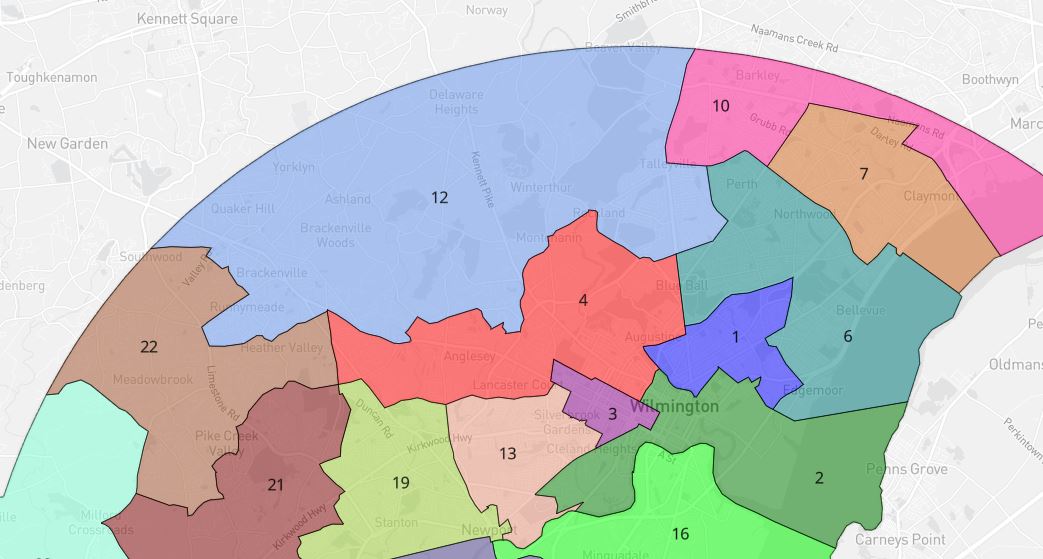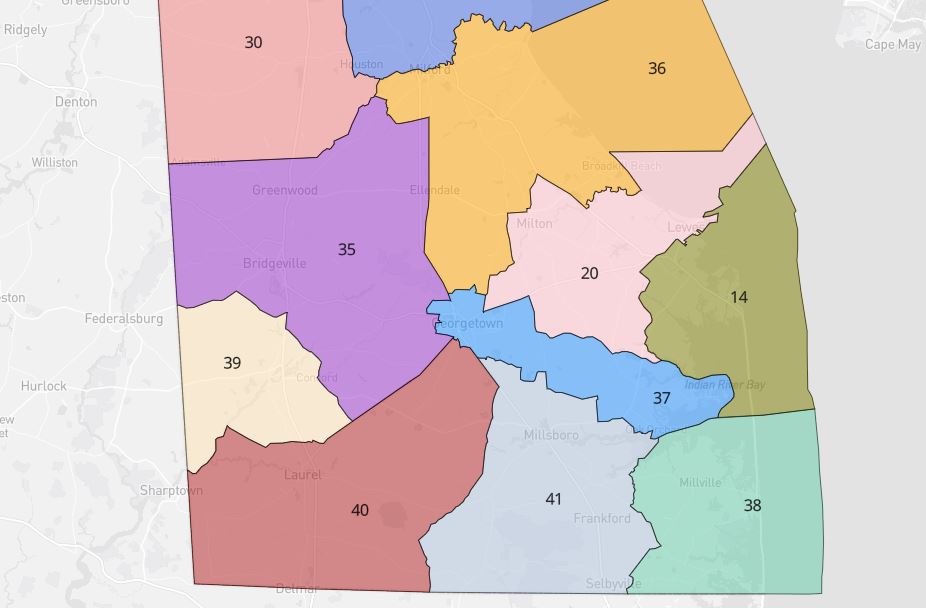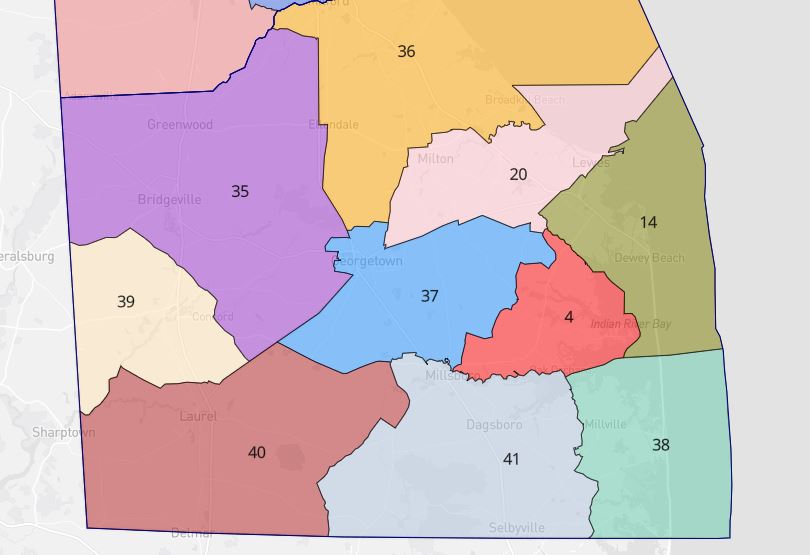Here you are…more of those nuggets of bloggy goodness that take up anywhere from a couple sentences to a few paragraphs. They’re things that weren’t enough to merit a full post but plenty worth writing about anyway. It’s one of my longest ongoing series for a reason. So read on…
The election in question
If it was worth my writing about, it’s worth giving the results. On Saturday the city of Seaford agreed with me that the incumbents were worth retaining in an overwhelming fashion: Mayor David Genshaw won by a margin of 412 votes to 189 for challenger Pat A. Jones and City Council member Matt MacCoy won with an even 400 votes against challenger Stacie Spicer’s 199. In terms of percentages, Genshaw had 68.55% and MacCoy had 66.78%, which to me seem like a hearty mandate to keep on the trajectory they’ve established. Congratulations to both and hopefully this is the start of a year of victories for common sense in Delaware.
A little runaway
Another cause I’ve championed recently is the idea of an Article V convention, more popularly known as a convention of states. But I briefly had a pause when I read this paragraph in a story about federal involvement in Alabama’s state affairs:
That is, unless We the People join with the states to call a Convention of States. A Convention of States is called under Article V of the Constitution and has the power to propose constitutional amendments that limit the power, scope, and jurisdiction of the federal government.
What does this mean in plain English? Basically, amendments can be written that get the feds out of virtually every area of state policy. Healthcare, education, energy, the environment, and agriculture would be among the host of issues that could be left to exclusively state control.
“Article V Patriot,” “White House says they’re going to start targeting state lawmakers working to protect children from transgender surgeries, radical sexual ideology,” Convention of States Action, April 8, 2022. Emphasis in original.
Perhaps the biggest fear that opponents of an Article V convention have is the idea of a “runaway convention” where the people who ostensibly meet to write amendments that “limit the power, scope, and jurisdiction of the federal government” instead decide to do away with the Bill of Rights. While amendments can be written to get the federal government off the backs of the states, it follows that their role could be abolished, too.
I suppose the fact that 38 states have to ratify any amendment gives us a little bit of protection in that regard, as there would probably be 13 states that hold on to restraints on federal power. Unfortunately, there are probably as many that would oppose any conservative amendments out of spite and that’s the other area where work is needed.
I just didn’t think that particular analogy is a good “sell” for the CoS.
Thirty-eight with an asterisk*
Speaking of Constitutional amendments I got an e-mail from my old liberal pal Rick Weiland, who has branched out from his lack of success in South Dakota to a similar lack of grifting aptitude on a nationwide basis. A few weeks back he claimed it was time to enact the Equal Rights Amendment because it had passed in 38 states.
In 2020, Virginia became the 38th state to ratify the Equal Rights Amendment (ERA) and also the last state needed to meet all constitutional requirements to allow it to finally become the 28th Amendment to the U.S. Constitution.
The ERA will add protections to guarantee equal legal rights for all American citizens, regardless of gender, nationwide.
We’re 4 months into 2022 and the ERA has not been published by the Archivist. The Archivist has an administrative duty to publish the amendment and thus officially add it to the Constitution, but refuses to overrule a Trump administration roadblock to do it.
Rick Weiland, “It’s time for the Equal Rights Amendment,” April 7, 2022. Emphasis in original.
That “Trump administration roadblock” is the logical result of five states since rescinding their ratification, either by outright legislation or by its not being ratified prior to a Congressionally-imposed deadline in 1982. Meanwhile, ERA advocates claim they have the numbers but need Congress to render inoperative both the deadline and the recissions, pointing to the length of time it took to pass the 27th Amendment – first proposed as part of the Bill of Rights in 1791, it wasn’t ratified until 1992. (However, Congress put no time limit on that one.) Their roadblock is the Republicans in the Senate, who have threatened to filibuster the Senate resolution (the House passed its version with a narrow majority.)
As I’ve stated from almost the beginning of this website, instead of an ERA this would be a better amendment:
Congress shall make no law that codifies discrimination for or against any person based on their race, religion, gender, or sexual orientation. This Amendment shall also be construed to include a prohibition on Congress enacting additional criminal code or punishment solely based on these factors.
Pretty cut and dried, isn’t it? No mealy-mouthed “The Congress shall have the power to enforce, by appropriate legislation, the provisions of this article.” It’s “Congress shall make no law.” Let’s get that equal rights amendment done.
Creating more informed voters
Four years ago I was a Maryland panelist for iVoter Guide, which was a fun experience and pretty natural for me because I liked doing the research.
Well, they’ve been on the hunt for more volunteers and I reckon that their time to deal with Delaware and Maryland is coming, now that we’ve finally reached the oft-delayed filing deadline in Maryland. (Delaware’s filing deadline isn’t until July but they only have one federal race, for Congress. So they’re probably not in need of much help.)
Now, it’s possible you might be needed in another state, but it’s still an interesting process that anyone from concerned citizens to political junkies can find a part in. So why not do your part? (I think I will, hopefully in Delaware but I may be interested in other states like Ohio and Michigan, since that’s the area in and around the 419 I grew up in.) It’s much easier than creating a website from scratch.
A holiday from a boondoggle
As I wrote this over the weekend, Maryland drivers were swarming gas pumps in the state to beat the end of a gas tax holiday that expired at the stroke of midnight on Easter Sunday. But David T. Stevenson of the Caesar Rodney Institute proposes an even better holiday: the state of Delaware enacting a “tax-free carbon holiday.”
As Stevenson explains, the state of Delaware – like several other liberal-run hellholes in the Northeast – joined the Regional Greenhouse Gas Initiative (RGGI) in 2009. Some state have rescinded their memberships since, but the remainder soak their local utilities by demanding a fee for each ton of carbon produced, with the state deciding what to do with the proceeds.
In Delaware’s case, 65% of the RGGI proceeds go to a non-profit that’s supposed to divvy out grants for energy efficiency projects, but instead has been hoarding cash to the tune of an estimated $16 to $17 million last year, bring its total up to nearly $100 million, according to Stevenson. The other 35% is designated for the state’s Department of Natural Resources & Environmental Control (DNREC), which administers programs assisting low-income consumers with the energy bills and weatherizing their dwellings. (In other words, wealth transfer.) Stevenson claims DNREC is sitting on its own cash surplus of $20 to $25 million.
We just saw the passage of a bill that uses a portion of the federally-fueled state surplus to give a $300 check to any Delaware resident who paid taxes in 2020. (That still doesn’t make up for what Uncle Sam raped us for, but regardless…) Perhaps the state can allow for an appropriate credit to any electric ratepayer in the state to soak up this surplus, which is basically money they paid as part of their utility bills anyway. Stevenson concludes that, “We note that New Hampshire returns RGGI revenue to electric customers, and Connecticut sends all RGGI revenue to its General Fund.” I like that first idea, and it can be the prelude to winding down our participation in this long-standing mistake.
The perpetual emergency
While AND Magazine has put up a lot of great content since I last produced odds and ends – including a look at upcoming election fraud, the issue with transgender men demanding to be placed in women’s prisons, and the situation on the ground in Afghanistan now that the Taliban is in full control – I’m choosing just one to discuss, the perpetual emergency.
The CCP virus caused a lot of disruption in our lives, but none greater than the loss of our liberty. As author Sam Faddis notes in his opening:
At the heart of the debate over COVID-19 restrictions is the distinction between rights and privileges. For most of human history some supreme authority, – a king, a sultan, a class of aristocrats – has presumed to grant to the common people certain privileges. By definition, as privileges, they can be granted, and they can be taken away.
The American concept of liberty is built on something fundamentally different. We do not enjoy privileges. We have rights. They are enshrined in the Constitution, but they are given to us by our Creator. We do not have the right to free speech, because some ‘body of humans’ granted it to us. We were born with it, and it cannot be taken away.
For two years now powerful interests in this country have attempted to change this. They have used all the power at their discretion to convert our rights into privileges that can be taken away whenever the powers that be decide some “emergency” requires it.
The real danger therein is obvious. Once you have enshrined the principle that an “emergency” justifies the revocation of God-given rights, it requires only the declaration of an “emergency” to do it again. And again.
Sam Faddis, “There Will Always Be An Emergency – The Assault On Our Liberties Has Just Begun,” AND Magazine, March 20, 2022.
In this case, Faddis continues on to talk about how rising fuel prices are the new “emergency.” Instead of the state cutting us a check, though, he details some of the ideas the International Energy Agency – a NGO with no ties to our government – would have enforced on our nation: reduced speed limits, mandatory work from home three days a week, car-free Sundays, cutting prices on mass transit, alternate-day car access to big cities…and the list goes on.
You’ll notice two things about this: one, our government is already thinking about ways to mandate this somehow, and two, they’re not discussing the most obvious solution, which would be to increase the supply of fuel to meet demand. In an effort to save face, the Biden regime restarted oil leases on federal lands, but at a greatly reduced and limited clip compared to the previous administration, where $2 a gallon gas was not uncommon.
But liberty lost is not easily regained, even if you elect the right people. Speaking of that:
An opponent to Liz Cheney
Rep. Liz Cheney may be the most hated politician in Wyoming (and perhaps much of the rest of the nation.) Polling is as sparse as people in America’s least-populated state, but a story from last summer in The Federalist suggested she has very little support in the state anymore.
Yet there may be a problem here, and I’m sure there are a few in the Cheney camp (which is essentially the national GOP establishment) who aren’t helping to create it by encouraging additional stalking horses to water down and spread out opposition in the Republican primary August 16. It’s possible Liz Cheney could win a huge primary with just 30% of the vote, so where would those 70% of Republicans and conservative independents turn?
Well, it turns out that the Constitution Party has a ballot spot in Wyoming and they have already selected their candidate, an erstwhile Republican by the name of Marissa Selvig. “I am beyond excited that it is official, and I am even more excited for the voters of Wyoming to have a real, constitutional choice in this race,” Selvig said in a party release. “It is long past time our elected officials honor their Oath to ‘uphold and defend’ the Constitution with integrity and honesty. That is exactly what I intend to do when I am elected in November.”
Now I’m not going to claim I know what’s best for Wyoming, but on a broad scale her platform is both well-written and common-sense. If it comes down to a four-way race between a Democrat, Libertarian, Cheney, and Selvig (those four parties were on the 2020 ballot) it will be interesting to see how Marissa does. Even if Cheney loses the primary, though, it’s possible the sheen has come off the GOP in The Equality State.
And yes, just to answer any naysayers about my Seaford endorsements, Marissa is a woman I would vote for.
A better offer
We all know that Elon Musk has offered to purchase Twitter and take it private, but given the “poison pill” resistance put up by Twitter’s current major stockholders perhaps there’s another way to introduce Musk to the world of social media – and it would cost Musk far less.
Andrew Torba, CEO of Gab, wrote this as part of an open offer to Musk:
We built our own servers, our own email services, our own payment processor, and so much more not because we wanted to, but because we had no choice if we were going to continue to exist.
What we are missing at the moment is an ISP. I fear that the next big leap of censorship is at the ISP level, with ISP’s blocking access to Gab.com. You solve that problem with Starlink. Together we can build infrastructure for a free speech internet.
I am willing to offer you a Board seat along with equity in the company in exchange for you selling your Twitter position and investing $2B into Gab. My offer is my best and final offer.
Andrew Torba, “Gab.com’s Offer To Elon Musk,” April 14, 2022.
For that matter, I could have the same issue with my ISP. Even though I’ve had the same server company for the sixteen-plus years I’ve had monoblogue, they are on at least the third owner I’m aware of and who knows how tolerant they will remain. Obviously I don’t have the coin for my own infrastructure, and I suppose that since this a hobby/obsession for me that’s the way it will stay.
But a few grand would be nice for my own server…heck, I’ll even do Starlink even though the state is finally contracting to bring me more reliable broadband.
The Delaware Way, explained once again
I could almost put this in the category of “duh” but since Rep. Bryan Shupe is one of those who tries not to let partisanship cloud his worldview, I’ll refrain.
But he brings up something that does belong in the category of elections matter: if you are a Republican in the Delaware General Assembly, your bill has a less than 50-50 chance of even getting a hearing in committee.
In the House Administration Committee during the 150th General Assembly, 67% of the bill submitted to this committed were heard. Of the bills submitted by the majority party, 86% of them were heard by the committee. Of the bills submitted by the minority party, only 38% of them were heard by the committee. In other words, 62% of bills submitted by the minority party were never heard in committee.
During the 151st Committee, which will end on June (30th), 2022, 66% of the bill submitted to the committee so far has been heard. Of the bills submitted by the majority party, so far 78% of them have been heard by the committee. Of the bills submitted by the minority party, so far only 42% of them have been heard by the committee. In other words, 58% of bills submitted by the minority party have not been heard in committee so far.
There seems to be a correlation between what party submits the bill and if the bill will be heard in this committee.
Rep. Bryan Shupe, “Politics overriding House rules,” March 31, 2022.
There would be a bit of research involved, but it’s worth noting that the online records of the Delaware General Assembly date back to the 140th session (1998-2000.) The accusation here is damning enough, but the compare and contrast would be even better – back then the parties were more congenial with one another, with part of the reason being that the House was Republican-controlled through 2008 while the State Senate has been controlled by Democrats for at least 30 years, per Ballotpedia. It would be eye-opening to see how prior performance, particular in the era of GOP control of the House, compares to that of today.
Programming note
It’s that time of year again: the Shorebird of the Month will return for another year.
I’ve traditionally done it the first Thursday of the month, but on months where Thursday falls on the 1st or 2nd I wait until the next one. So gazing at my calendar, and bearing in mind how the best-laid plans go, these are the projected SotM dates: May 5, June 9, July 7, August 4, and September 15. The September date is so late because we have ten games currently scheduled in September – if they don’t play at least ten I will combine August and September numbers and only pick one set for the month-plus, but I won’t know that until the regular season ends September 11. Shorebird of the Year will follow a week later and picks and pans the week after that.
Aside from that, I’ll start collecting items that interest me now for the next edition of odds and ends.





